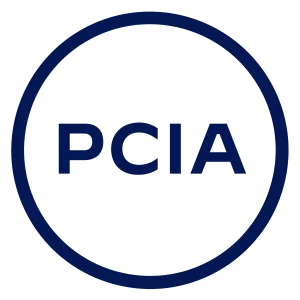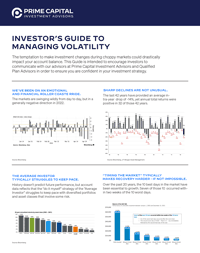I am writing this month’s newsletter during Memorial Day weekend and couldn’t help but to think about those who gave their lives for our country. My mind not only kept thinking about what they sacrificed but also the sacrifices of their families, as well. I hope everyone had a great Memorial Day weekend and stayed safe.
In mid-May we had a webcast with our chief investment officer, Scott Duba, during which he outlined what is occurring in the economy, the market, and tactical adjustments we made within your portfolios. If you missed it, click the link below.
Now onto an important investment topic and, to be candid, one of the secret ingredients to a prudent investment approach: dollar cost averaging (DCA).
- For those who are in the workforce, this is a vital topic.
- For those who are retired, you can skip down to systematic withdrawal strategy (SWS).
Dollar cost averaging is a strategy that can help you lower the amount you pay for investments and minimize risk. Instead of purchasing shares at a single price point, with dollar cost averaging you buy in smaller amounts at regular intervals, regardless of price. If you are investing in a company-sponsored plan like a TSP, a 403(b), a 401(k) or an SEP/Simple IRA, you are already doing this with your matched contributions. The question is, though, are you saving regularly into your IRAs or taxable accounts?
- If not, we should talk to see if that makes sense for your cash flow and financial plan.
- If you are, that’s wonderful, but evaluate when you are saving. Calculations show it’s best to save money at the beginning of the month and second best toward the middle of the month.
Let’s take a look at a real-life example that shows how DCA works! If you had $500,000 at the beginning of 2018 and DID NOT save anything, your portfolio would be $772,468 based on the returns of the S&P 500. It’s not recommended to only invest into that index, but this is for informational purposes.
- Dollar Cost Averaging – If you saved $3,000 at the beginning of each month from January 2018 to April 2022, your portfolio would be $972,182.
Versus:
- Lump Sum Contribution – If you saved $36,000 in the worst month each year over those four years, due to your impeccable timing of course, your portfolio would be $960,045.
As you can see, it pays to DCA instead of trying to time the market, even if you were able to time the worst months of each year! There are some issues with DCA, just like with anything when it comes to investing. When a large cash event arises, like a sale of property or a bonus from work, calculations show it’s best to lump sum invest that money instead of having cash sit on the sidelines not working for you. Additionally, depending on where you use DCA, you could encounter brokerage fees that could impact your returns. All these items have to be taken into consideration.
To summarize, if you have steady income, good cash flow (budget), and can save the additional funds toward long-term investing, dollar cost averaging should be considered. If you have a bonus, or large proceeds from an event, lump sum investing would be worthy of consideration. I am here to help in either and all situations!
Systematic Withdrawal Strategy – How about how and when to withdraw funds when you’re retired? Calculations show it’s best to withdraw at the end of the month, the exact opposite for those who are saving. Go figure!
Here is a real-life example outlining the SWS. In this calculation, I used the monthly return of the S&P 500, which again is not a recommendation but is used for illustrative purposes. In this scenario, you now had $1,00,000 in January of 2018 and did not make any withdrawals. Your portfolio would be $1,544,936 by April of 2022.
- Systematic Withdraw Strategy – If you made $3,000 systematic withdrawals at the end of each month over the same timeframe, your portfolio would be worth $1,346,858.
Versus:
- Lump Sum Withdrawals – If you were the best market timer and withdrew $36,000 in the best month of each year from 2018 to 2021, your portfolio would be $1,353,928. Market timing is extremely hard, and you would have been incredibly lucky to pick the best month for four years. Even with those low probabilities, the difference of $7,070, or 0.525%, is not considerable and does not appear to be worth the risk.
In summary, controlling what you can by saving at the beginning and withdrawing at the end of each month shows to be the most prudent approach. If you have any questions, please schedule a meeting to discuss your financial plan.
I have a special announcement coming out next month regarding a new service that will address dollar cost averaging and will also help with cash flow and emergency savings! Stay tuned for next month’s update!
The goal of Portfolio Payday™ is to get you to a more robust retirement sooner, giving you the chance to chase your dreams at the earliest age possible. With Portfolio Payday™, you are your own boss, paying yourself today and in the future.





